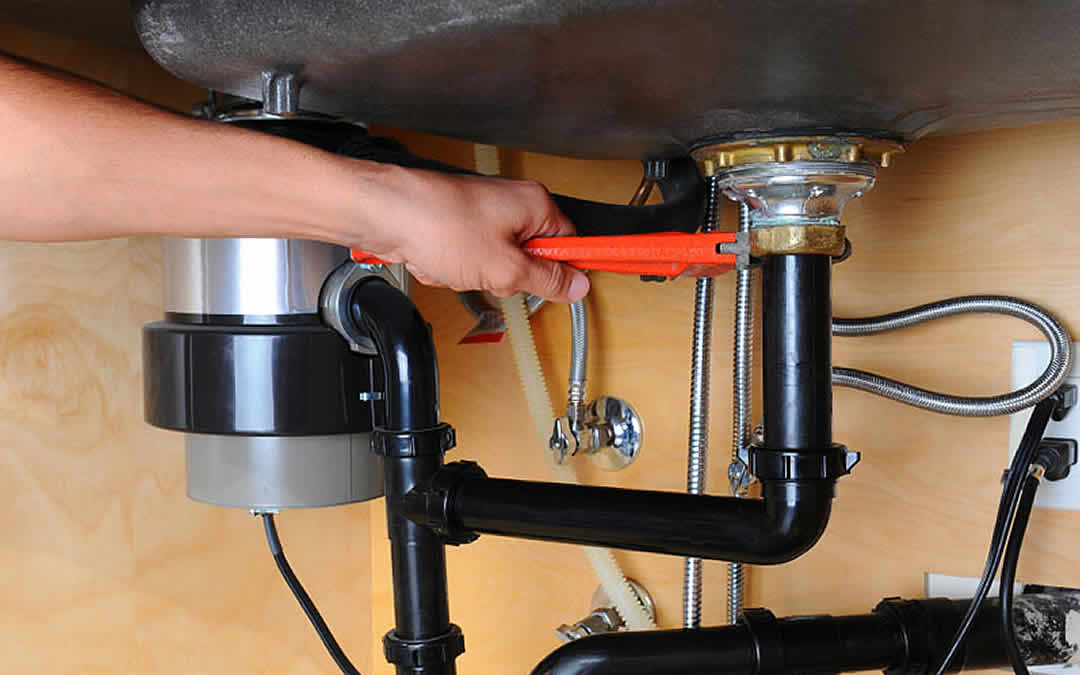They are making several great annotation on How to fix a pretty consistent leak from my garbage disposal in general in this great article in the next paragraphs.

Waste disposal unit are crucial kitchen appliances that aid in dealing with food waste successfully. Nonetheless, a dripping garbage disposal can be a discouraging and untidy trouble to take care of. Luckily, several leaks can be dealt with conveniently with a few simple actions. In this post, we will discuss how to fix a dripping waste disposal unit properly.
Intro
Waste disposal unit are installed under cooking area sinks and are designed to shred food waste right into smaller pieces, permitting it to travel through the pipes system quickly. While these devices are usually reputable, leakages can take place over time because of damage, loosened connections, or damage to the system.
Step-by-Step Overview to Repairing a Leaking Garbage Disposal
Shut off the Power
Prior to trying any repair services, ensure that the power to the waste disposal unit system is switched off to stop the danger of electrical shock.
Locate the Leakage
Recognize the exact place of the leak and figure out the cause
Tighten up Connections
Use a wrench to tighten any loosened links between the disposal system and the pipes system.
Change Seals or Gaskets
If the leak is due to used seals or gaskets, get rid of the old elements and change them with new ones.
Patching Cracks or Holes
For cracks or holes in the disposal device, usage epoxy or an appropriate patching material to secure the damaged area.
Determining the Resource of the Leakage
Before attempting to repair a dripping garbage disposal, it is essential to determine the source of the leak. This can commonly be done through visual assessment or by conducting basic tests.
Visual Evaluation
Check the garbage disposal device very carefully for any kind of signs of water leakage. Pay attention to locations around seals, gaskets, and link points.
Testing for Leakages
One way to evaluate for leakages is by running water with the disposal unit and checking for any noticeable signs of leak.
Common Causes of Leaks in Trash Disposals
Worn Seals and Gaskets
Seals and gaskets play an important role in protecting against water from dripping out of the garbage disposal. With time, these parts can wear away, leading to leaks around the disposal unit.
Loose Connections
The connections in between the garbage disposal and the plumbing system can end up being loose over time, creating water to leak out during operation.
Cracks or Holes in the Disposal Device
Physical damage to the waste disposal unit, such as cracks or holes in the real estate, can also lead to leakages.
Devices and Materials Needed for Taking Care Of a Leaking Waste Disposal Unit
Prior to starting the fixing procedure, gather the required tools and materials, consisting of a screwdriver, flexible wrench, plumbing professional's putty, replacement seals or gaskets, and epoxy or patching product for fixing cracks or openings.
Testing the Garbage Disposal After Fixing
As soon as the repair is full, check the waste disposal unit by running water with it to ensure that the leakage has been resolved.
Preventive Upkeep Tips to Avoid Future Leakages
To stop future leaks, it is essential to perform normal maintenance on your waste disposal unit. This includes maintaining it clean, staying clear of putting non-food products or hard objects down the disposal, and regularly checking for leaks or various other problems.
Conclusion
In conclusion, taking care of a leaking garbage disposal is a reasonably simple procedure that can be completed with fundamental devices and materials. By adhering to the steps laid out in this short article and exercising preventive maintenance, you can maintain your garbage disposal in good working problem and prevent pricey repair work in the future.
What to Do About a Leaking Garbage Disposal
A leaking garbage disposal often goes unnoticed until you confront a sopping cabinet, a foul-smelling puddle, or an audible drip-drip-drip from the unit. The fix can be frustrating, too, because the leak can stem from a number of components in the system. Fortunately, with a little sleuthing, you can zero in on the leak and—depending on the exact location—stop the icky oozing and repair the component that caused it. Worst case scenario, if it turns out that the garbage disposal must be replaced, installing a new one is a reasonable do-it-yourself task for those with basic plumbing skills. Read on to keep the cash you’d otherwise hand over to a pro.
Prepare to find the leak
Prior to testing the garbage disposal for leaks, unplug it at the wall outlet and turn off the power from the breaker box to prevent electrical shock. Then insert a watertight sink stopper into your sink drain and wipe the unit dry with a clean cloth. In any handy container, mix a few drops of food coloring into a few cups of water, and pour the dyed water onto the sink stopper to help you locate the leak.
Investigate the source
the top, where the disposal meets the sink drain the side, where the dishwasher hose or main drain pipe connects to the disposal or the bottom of the unit Inspect each of these locations while gliding a light-colored rag over the unit; the dyed water will readily show on the rag and reveal the location of the leak. If a leak isn’t immediately apparent, remove the sink stopper and pour a few more cups of dyed water down the sink drain, then check for leaks again. Leaks near the top of the unit are more likely to show themselves while the sink is plugged, while side and bottom leaks are more noticeable while the sink is unplugged.
The metal sink flange that sits directly inside the sink drain is typically sealed around the top with plumber’s putty (a clay-like sealant) and then secured from under the sink with bolts. If the plumber’s putty deteriorates, or the bolts loosen, the flange can no longer form a watertight seal between the sink drain and the disposal—which could cause a leak at the top of the unit.
To reseal the leaky flange, you must first detach the garbage disposal. Start by loosening the screws securing the main drain pipe to the disposal, then loosen the screws in the metal clamp securing the dishwasher hose to the disposal and detach the drain pipe and dishwasher hose from the disposal. Loosen the screws in the mounting ring that connects the disposal to the metal mounting assembly beneath the sink, then pull down the disposal and carefully set it on a clean, dry surface. Loosen the bolts in the mounting assembly with a wrench, then pull down the mounting assembly and set it near the disposal.

I discovered that entry about Why Is when surfing around the web. Feel free to take a moment to share this entry if you enjoyed reading it. Thank you for going through it.
Call Today